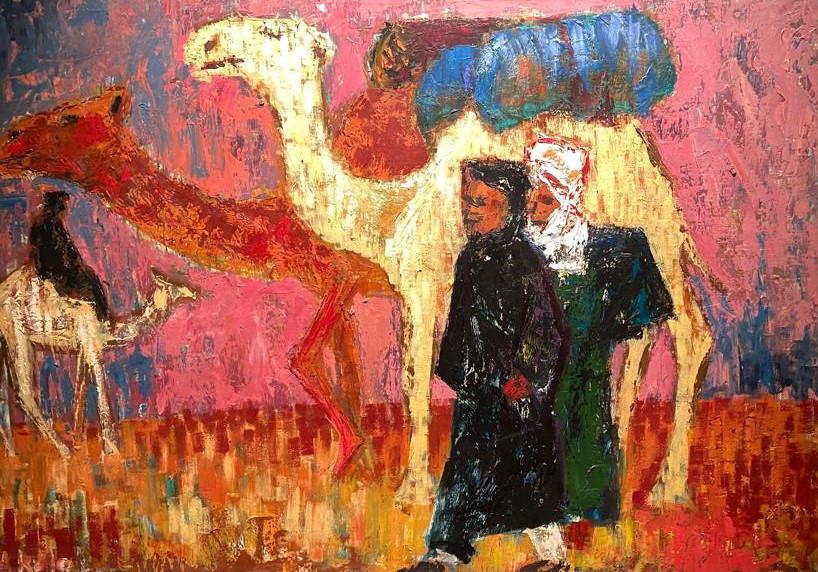
By Ife Adegbie
Arewa is used to describe the northern people of Nigeria, a broad term often homogenizing the cultures and groups of people that make up Northern Nigeria.
An art exhibition of works from over 40 Northern Nigerian artists is challenging stereotypes of Northern Nigerians life.
The exhibition, titled AREWA?, and curated by Aisha Aliyu-Bima, opened on July 8, 2024, at the Yemisi Shyllon Museum of Art (YMSA) of the Pan-Atlantic University.
Multiple years in the making, this exhibition carefully addresses the various lens with which Northern Nigeria is often portrayed, making one to question what they may have been taught, especially as it pertains to narratives. It’s thematic journey; royalty – women- conflict – new visual languages focuses on different aspects of northern Nigerian life. Through these themes, it gives us a chance to see different aspects of northern Nigerian life and history allowing us to challenge the preconceived notions and bias we may have held or been taught.
Commercially and culturally, Nigerian art has witnessed exponential growth in within the past decade, as witnessed in the Sotheby’s sale of Ben Enwonu’s Christine (1971) for $1.4 million and the increase in gallery spaces in Nigeria. However, art from Northern Nigeria has not been party to these successes and relevancy. This phenomenon is not limited to contemporary Nigerian art as precolonial collections (private and public) similarly have larger numbers of southern Nigerian art. , When northern Nigerian art is mentioned, it is often grouped under the broad term on ‘Hausa’ art which encompasses regions outside of Nigeria.
Given the disregard for the diversity and histories of Northern Nigeria, it comes as no surprise that northern Nigerian art is similarly absent in the larger conversation about Nigerian art. Although relevant in pieces such as inspiration and design, northern Nigerian art has not enjoyed the same successes and relevancy art from the rest of Nigeria has.
Prior to this exhibition, the only culturally relevant mention of northern Nigerian art was the Zaria art Society, an artistic rebel group from the 60’s formed by Uche Okeke, Demas Nwoko and 9 others. The aim of this group was ‘ Natural Synthesis’; the amalgamation of European techniques and Nigerian traditions, topics and form of which Arewa? The exhibit continues. Although located in Zaria, only one member was from Northern Nigeria validating the question of representation that Arewa? The exhibit poses.
The generating discourse from the exhibit begs the question of whose fault it is that Northern Nigeria is left from the larger conversation about Nigerian art. Given the entry limitations to art, is the absence a fault of misrepresentation conservativeness or economy. Prof Jerry Buhari believes it is due to misrepresentation and acceptance. He believes the idea of homogeneity within the North should be fought first , through the acceptance of dissenting and non-conformal voices which would broaden the kinds of stories that are told. Similarly, Mrs kadaira Ahmed believes representation is not possible when your stories have never been told. As seen in the journey of Afrobeats, the acceptance of ourselves in our entirety, makes us stronger. The curator, Aisha Aliyu-Bima has definitely made stronger the case for northern Nigerian art in the larger art conversation.
Disclaimer
Comments expressed here do not reflect the opinions of Vanguard newspapers or any employee thereof.